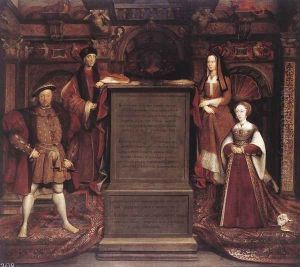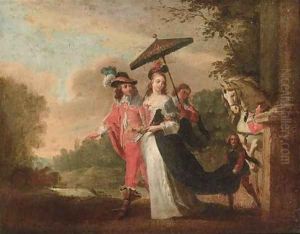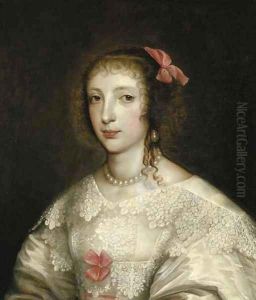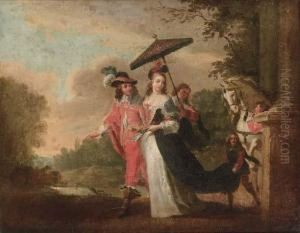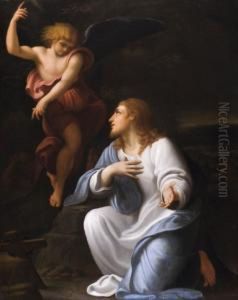Remigius Van Leemput Paintings
Remigius van Leemput was a Flemish painter, printmaker, and miniaturist active in England during the 17th century. Born in Antwerp around 1609 or 1610, he was a pupil of the renowned Flemish artist Sir Anthony van Dyck, who was the leading court painter in England under King Charles I.
Van Leemput is best known for his replicas of works by other artists, particularly those by Van Dyck. He is also noted for a miniature copy he made of the famous painting 'The Rokeby Venus' by Diego Velázquez. His works display a high level of skill, particularly in the attention to detail and the rendering of textures and fine materials, which is typical for the miniature painting tradition.
In England, Van Leemput found a niche creating miniatures and small-scale copies of larger paintings, which were popular among art collectors of the period. His talents were appreciated by the royal court, and he was employed under the patronage of King Charles I. After the execution of Charles I in 1649 and the establishment of the Commonwealth under Oliver Cromwell, the market for van Leemput's work would have been impacted by the less opulent tastes of the ruling regime.
Despite the political turmoil of the English Civil War and its aftermath, Van Leemput continued to work and live in England until his death in 1675. While not as widely known as some of his contemporaries, Remigius van Leemput's career reflects the international nature of the art world during the 17th century and the cross-cultural exchanges between the art markets in England and the Low Countries. His work is held in various collections and continues to be studied by art historians interested in the period.
